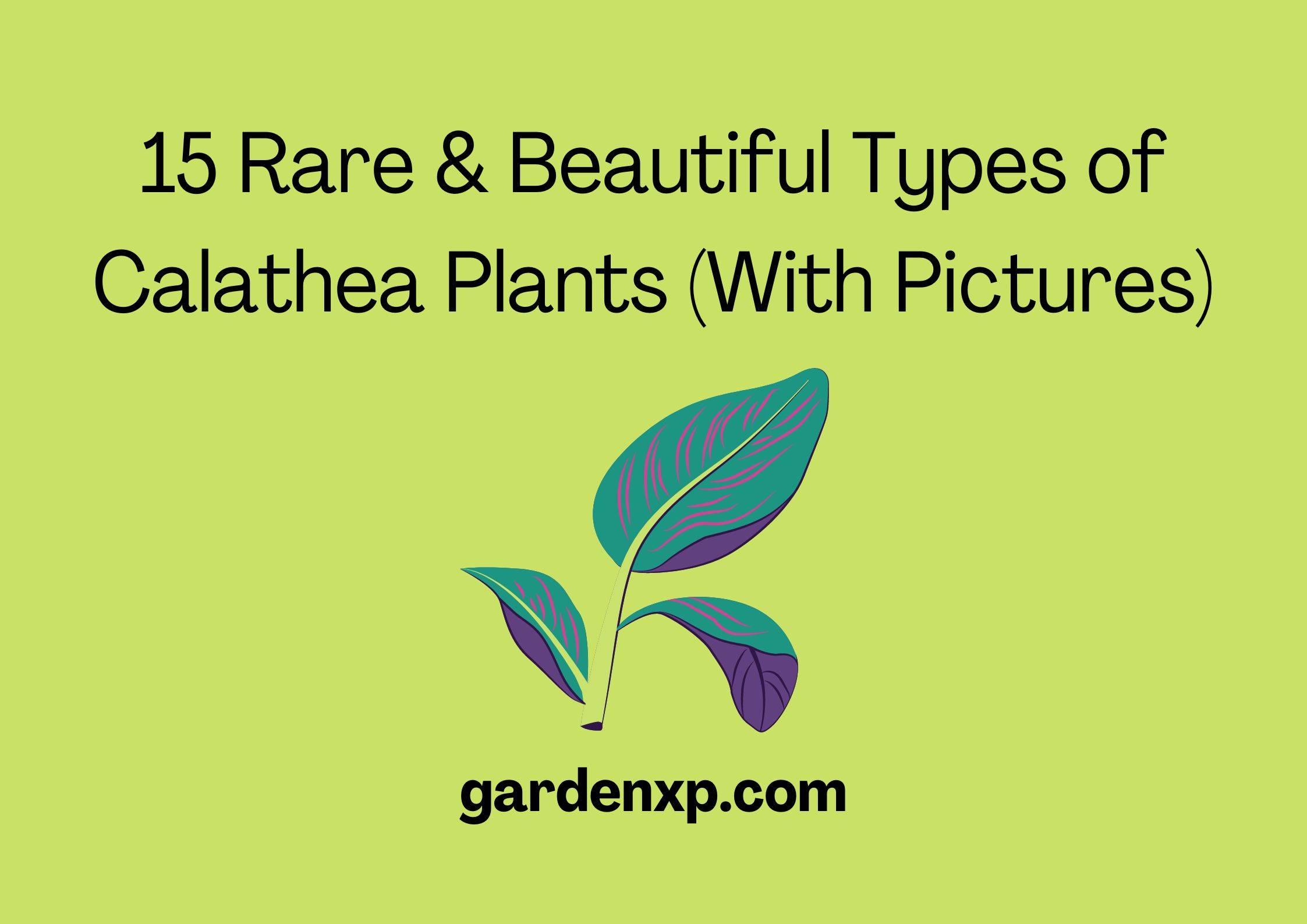Maranta vs Calathea (Prayer Plant) – Differences and Similarities
Hey folks! Welcome back!
I hope your garden is prospering and touching the sky with your efforts. In this article, we will be discussing a comparison of Maranta vs Calathea. If you are one of those who may see a problem identifying similar garden plants, as the calathea plants are available in many types like Calathea Majestica, Calathea Veitchiana, Calathea Beauty Star Plant, Calathea Zebra Plants, then here we will be discussing a few quick tips to spot the differences and similarities between Maranta vs Calathea.
Key takeaways:
- Both plants are beautiful and have unique-looking leaves that make them brilliant ornamental houseplants.
- these plants belong to the same family Marantaceae but have different genus, these both are two different species having striped leaves, varied colors, and pleated leaves with vibrant ribs.
- They look extraordinary in the corner of the house attracting all the gaze.
- We get confused many times buying these in the stores believing that they both are the same. Let’s look at the differences so that you don’t get confused anymore and check the caring tips for maranta as well as calathea.
Do you know maranta and calathea are not the same plants and instead have many differences in various aspects?
| Maranta | Calathea / goeppertia | |
| Ease of care | Fairly Easy | Can be challenging |
| Temperature | Average | Average |
| Humidity | High | High |
| Light | Indirect bright | Many different shapes |
| Water | Frequent | Frequent |
| Varieties | Few | Many |
| Moving leaves | Yes | Yes |
| Leaf shape | Oval | Many diffrent shapes |
| Propagation | Stem cutting in water Stem cutting in soil Dividing plant when repotting From Seed | Dividing plant when repotting |
| Toxicity | Considered safe for humans and pets (not to be ingested)* | Considered safe for humans and pets (not to be ingested)* |
What is Maranta?
This variety has more than 40 species that are famous in every household so every farmer grows as per their requirements. It is native to the tropical regions of Central and South America. This plant is popularly known as a versatile houseplant.
Maranta is commonly called prayer-plants. It has distinctive veins on the leaves and produces oval-shaped leaves in the plant. It will suit best your indoor plant as it will add magic to your area.
Maranta Prayer Plant Varieties
Some of the famous Maranta prayer plant varieties are discussed below, so you have a look at them and choose the best phone for you. As per your desires, they are as follows:
Maranta leuconeura’ Erythroneura’ (Red Prayer Plant)
- It is one of the varieties that will produce greenish-black colored leaves in the plant with a reddish shade.
- There is one of the popular house plants that has red veins on its leaves.
- When you grow them in the pot, they will grow at their best.
- Also, growing them in the hanging pot will suit their growth.
Maranta leuconeura ‘Marisela’
- It is another variety that is native to Brazil.
- Like other varieties, it also likes to grow in a high level of humidity.
Maranta leuconeura var. erythroderma ‘Lemon Lime’
- This variety of maranta is a slow-growing variety.
- It will produce oval-shaped leaves in the plant with green color.
Maranta leuconeura var. ‘Kerchoveana’
- Last, but not least, it is another variety that is known as rabbit foot.
- It will grow as wines in the hanging pots and look amazing in your garden area.
- It produces velvet foliage in the plant with the brown splotches in it.
What is Calathea?
Calathea is also known as a prayer plant and originated from Africa and South America. This variety of plants is more significant as compared to the maranta plants. One of the famous varieties of this plant is the zebra plant also scientifically known as Calathea zebrina.
You will be amazed to see that it has more than 300 species that include different shapes of the leaves, and different shades of the plant. this variety of glossy foliage attracts everyone and stands out best with the other plants in the garden area.
Famous Calathea Called Prayer Plants
Some of the famous calathea prayer plant varieties are discussed below so you have a look and choose the best one as per your requirements. They are as follows:
Calathea Makoyana
- The leaves of this plant are in the shape of an egg.
- Its foliage is pink in color and tends to produce white color flowers in the plant
Calathea Medallion
- It is another type of plant that has a waxy texture on it.
- It will grow best if you will provide it with moderate sunlight conditions.
- It tends to produce medallion-structured leaves in the plant with green patterns.
Calathea Burle Marxii ( Fishbone Calathea )
- It is one of the varieties of calathea that is an amazing house plant with its amazing foliage.
- Being a slow grower, it will produce fan-like clusters of leaves that will look attractive.
- Its leaves look like fishbone and are green in color with a reddish color inside.
Are calathea and Maranta the same plant?
Belonging to the same family does mean that the two plants would be similar; they are a lot different from each other.
The maranta plants have leaves that are oval-shaped and are considered to be the true prayer plants whereas the calathea plants have leaf shapes from round to oval types and only a few of its varieties show foliar nyctinasty in which the leaves show folding during the nighttime.
Both the plants are grown in the same environmental conditions i.e. both of them are tropical understory plants.
Maranta vs calathea difference
Here are the differences that maranta and clothes plants have:
Prayer plants
The Maranta plants are the true prayer plants as they perform nyctinasty. Calathea plants, in general, are not nyctinastic; only a few varieties are the prayer plants. This is the principle difference between these two plants. Nyctinasty is all about the plants opening their leaves in the daytime while closing the leaf surface during the nighttime. It’s like sleeping at night.
The maranta plants are sensitive to sunlight whereas the calathea plants are sensitive to light in very few cases.
Leaves
The maranta leaves are different from calathea leaves though both have stripes. The stripes are different in both cases as well. The leaves of maranta plants are bright and oval-shaped having symmetrical ribs and veins. The deeply pleated leaves of maranta have red or green stripes. In order to grow them successfully you need to save the plants from the spider mites.
The calathea plant leaves are green colored and look like ‘water-colored painting’ patterns. The leaves of Calathea are round, oval, and even oblong-shaped having ornate patterns. There are various patterns seen in calathea varieties which is not the case in maranta plant leaves.
Growth and spreading
Maranta plants spread well with their thin stems and are low-growing plants. The plant is vine-like and perfectly grows well in hanging baskets. The plants grow vertically less than horizontally or spread. They are equally good to grow as a groundcover. The maranta plants as grown in hanging pots can be placed indoors to outdoors like in yards, porches, etc.
The Calathea plants have stiff stems that grow erect and tall. The plants reached a height of two feet. The leaves are hard and not as spread as maranta plants. The calathea plants grow best when placed outside the house.
Temperature
The maranta plants are tolerant to cold temperatures while Calathea plants are not. The temperature below 60 degrees still is manageable for the maranta plants. The Calathea plants like more humid conditions.
Propagation
The maranta plants are propagated in three ways. The propagation of maranta plants can be done by root division while repotting the plant, using stem cuttings, and planting. Other than this, the propagation of Calathea can be done by using the root division method.
Blooms
The blooms of maranta plants are small-sized and soft bodies. The flowers rarely grow but also look beautiful in contrast to the leaves. The flowers are tubular, 2-5 petals, and white.
The calathea flowers bloom slowly and the flowers again rarely grow indoors. During the summer, the flowers bloom and come in colors like orange, yellow, white, and purple.
Maranta vs calathea care
- The calathea plants are less forgiving than the Maranta plants. In general, the family Maranatha cea has plants that need very little care and thrive well with less care.
- Maranta needs less care in winter than calathea plants like Dieffenbachia care in winters, maranta can tolerate cold conditions better than Calathea plants.
- The maranta plants are suitable to grow in hanging baskets or pots as well. The stems of maranta are thin and extend better than the calathea that is bushy and have erect stiff stems, which do not spread that much.
- The maranta plants are so easy to propagate whereas the calathea plants need more care and it’s challenging to grow them. Pruning needs to be done occasionally so that healthy leaves grow. The Calathea plant doesn’t need much pruning.
- The marnata plants need moist soil, it is important to not let the soil dry at all Calathea plants need some dry conditions as well. The plant should be watered once the soil has gotten dried. They have the wet soil for a long time.
Wrapping up the context
In this guide, you come to know that Belonging to the same family does mean that the two plants would be similar; they are a lot different from each other.
The maranta plants have leaves that are oval-shaped and are considered to be the true prayer plants whereas the calathea plants have leaf shapes from round to oval types and only a few of its varieties show foliar nyctinasty in which the leaves show folding during the nighttime.
Both the plants are grown in the same environmental conditions i.e. both of them are tropical understory plants.
Thanks for reading! Happy Gardening!
FAQs
Is Maranta easier than Calathea?
The Maranta plants are pre easier to grow than calathea plants. They are more forgiving and grow in similar conditions but Maranta plants can easily tolerate cold temperatures than calathea.
Why are calathea leaves curling?
The calathea leaves can curl if the plant is exposed to cool air or too warm winds. The temperature can be the lead cause of making the calathea leaves curl.
Can I grow Calathea in water?
No calathea plant cannot grow roots in water.
Is Maranta toxic to cats?
The maranta plants are non-toxic to humans as well as pets like cats. The maranta leuconeura, also called a prayer plant, is a common and popular variety that is not harmful to grow at all in your home.
How many types of Calatheas are there?
Calathea orbifolia, Peacock plant, Pin-strips calathea, Calathea zebrina, and Calathea roseopicta are some of the species of Calathea.


